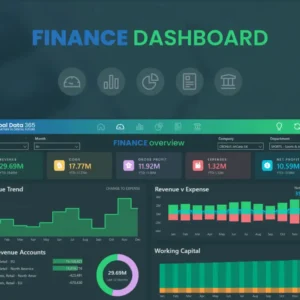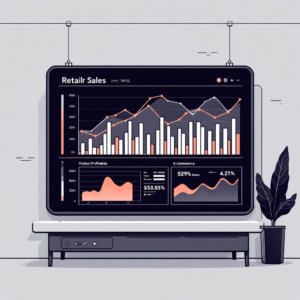In today’s data-driven world, ensuring the security of sensitive information is paramount. As organizations harness the power of Power BI for data analysis and reporting, it becomes crucial to implement robust data security measures. In this blog, we will explore the best practices for securing data in Power BI. Join us as we delve into the key aspects of Power BI data security, discuss the importance of protecting data, and provide actionable insights to help you implement effective security measures.
Understanding Power BI Data Security
Importance of Data Security: Learn why data security is vital in Power BI deployments. Understand the potential risks and consequences of data breaches, unauthorized access, and data leakage.
Power BI Security Architecture: Explore the underlying security architecture of Power BI, including data encryption, access control, and authentication mechanisms. Gain insights into how Power BI ensures the confidentiality and integrity of your data.
Power BI Data Security Best Practices
Data Classification and Sensitivity: Classify your data based on its sensitivity and apply appropriate security measures accordingly. Identify and protect sensitive data to prevent unauthorized access or disclosure.
Role-Based Access Control (RBAC): Implement RBAC in Power BI to restrict access to reports, dashboards, and datasets. Assign roles and permissions to users based on their job responsibilities to ensure data access is appropriate and controlled.
Row-Level Security (RLS): Leverage RLS to limit data visibility at the row level based on user roles and attributes. Implement dynamic filtering to ensure users only see the data relevant to their responsibilities.
Data Encryption: Enable encryption for data in transit and at rest. Utilize Secure Socket Layer (SSL) and Power BI’s encryption options to safeguard data during transmission and storage.
Data Gateway Security: Configure and secure the Power BI data gateway to establish a secure connection between on-premises data sources and Power BI. Implement appropriate access controls and monitor gateway activity.
Monitoring and Auditing: Implement monitoring and auditing mechanisms to track user activity, identify suspicious behavior, and detect potential security threats. Regularly review audit logs and take appropriate actions to mitigate risks.
Data Refresh Security: Secure data refresh processes to ensure the integrity and confidentiality of refreshed data. Implement secure credentials management and leverage encryption options for data sources.
Conclusion:
Implementing robust data security practices is vital in Power BI deployments. By understanding the importance of data security and following best practices, you can safeguard your organization’s sensitive information and maintain the trust of your stakeholders. Take proactive measures to protect your data and unleash the full potential of Power BI for secure and impactful data analysis.







